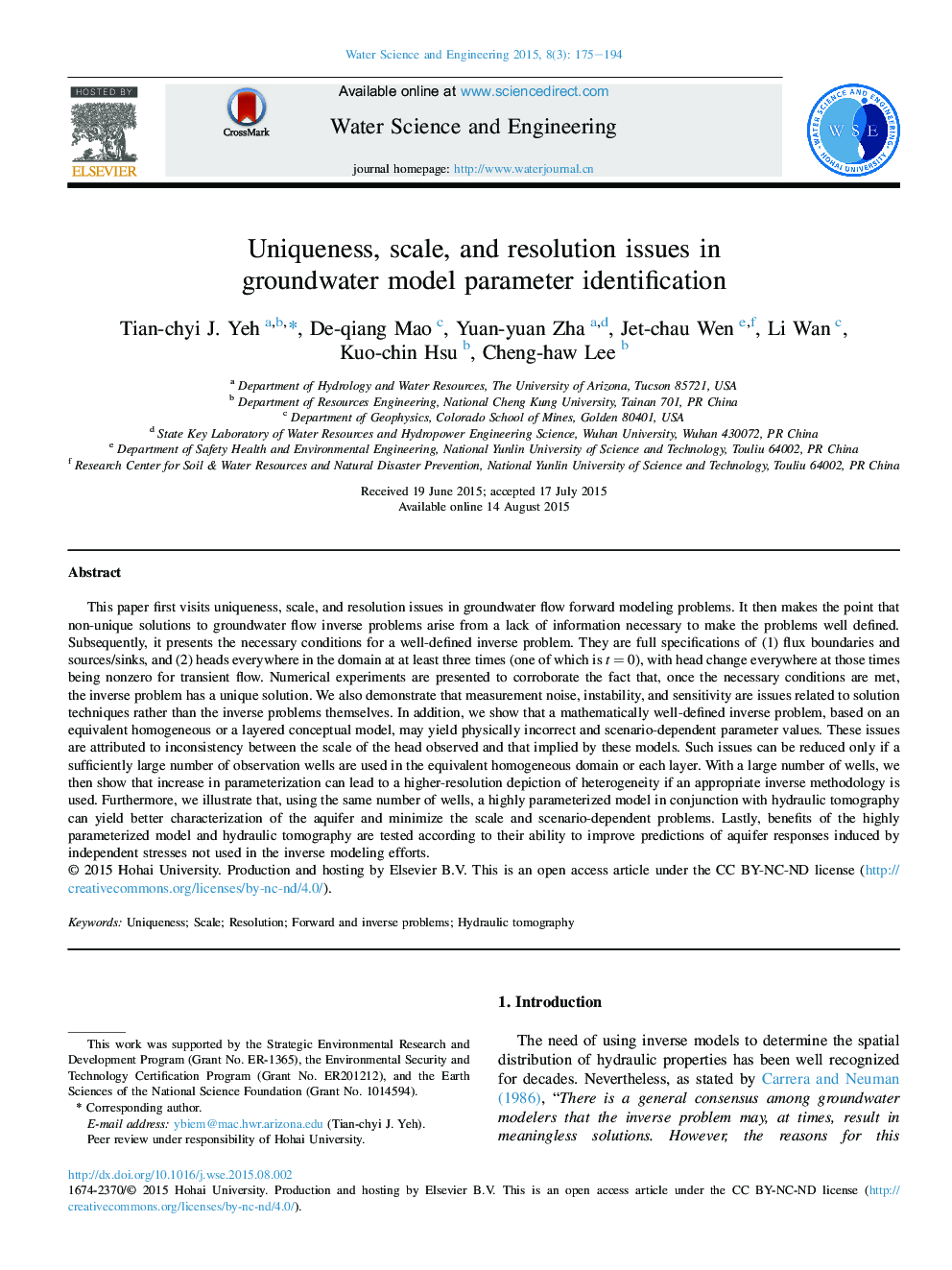| Article ID | Journal | Published Year | Pages | File Type |
|---|---|---|---|---|
| 313378 | Water Science and Engineering | 2015 | 20 Pages |
This paper first visits uniqueness, scale, and resolution issues in groundwater flow forward modeling problems. It then makes the point that non-unique solutions to groundwater flow inverse problems arise from a lack of information necessary to make the problems well defined. Subsequently, it presents the necessary conditions for a well-defined inverse problem. They are full specifications of (1) flux boundaries and sources/sinks, and (2) heads everywhere in the domain at at least three times (one of which is t = 0), with head change everywhere at those times being nonzero for transient flow. Numerical experiments are presented to corroborate the fact that, once the necessary conditions are met, the inverse problem has a unique solution. We also demonstrate that measurement noise, instability, and sensitivity are issues related to solution techniques rather than the inverse problems themselves. In addition, we show that a mathematically well-defined inverse problem, based on an equivalent homogeneous or a layered conceptual model, may yield physically incorrect and scenario-dependent parameter values. These issues are attributed to inconsistency between the scale of the head observed and that implied by these models. Such issues can be reduced only if a sufficiently large number of observation wells are used in the equivalent homogeneous domain or each layer. With a large number of wells, we then show that increase in parameterization can lead to a higher-resolution depiction of heterogeneity if an appropriate inverse methodology is used. Furthermore, we illustrate that, using the same number of wells, a highly parameterized model in conjunction with hydraulic tomography can yield better characterization of the aquifer and minimize the scale and scenario-dependent problems. Lastly, benefits of the highly parameterized model and hydraulic tomography are tested according to their ability to improve predictions of aquifer responses induced by independent stresses not used in the inverse modeling efforts.
